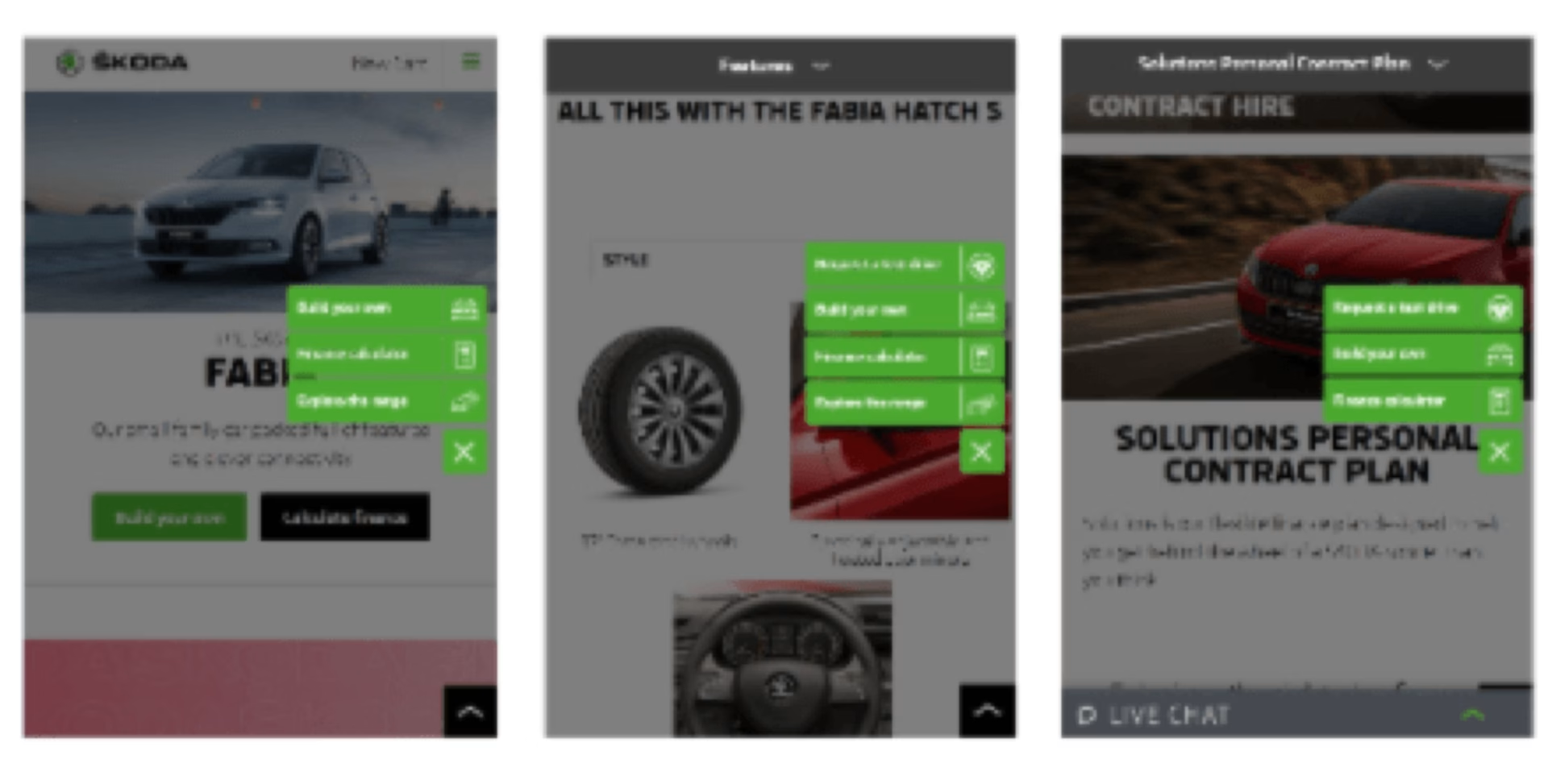The company
ŠKODA is one of the oldest car manufacturers in the world, part of the Volkswagen Group.
The challenge
Test drives are a key stage in the customer car purchase journey. And with most of the pre-purchase research taking place online, ŠKODA's test drives are increasingly booked online.
ŠKODA UK provides its online customers with a unique online tool called the ŠKODA Toolkit, which includes a Car Configurator and Finance Calculator. It's the perfect place for prospective customers to visualize how their dream car might look and feel.
The team wanted to encourage visitors to request a test drive by increasing the number of interactions with ŠKODA’s Toolkit on the website.
They wanted to understand
What the most critical areas of the website creating navigation barriers for customers were
Where the biggest opportunity for improvement was
What types of interaction have the highest correlation with booking a test drive
The team turned to the global marketing agency Merkel and Contentsquare's Digital Experience Intelligence platform to help optimize their customer experience and increase the number of test drives booked on their website.

The solution
Building a measurement framework
At the beginning of the project, the Merkle team built a measurement framework for Škoda—a map of the metrics that were critical to ŠKODA’s success.
The visualization allowed Merkle's analysts, working closely with ŠKODA’s digital transformation team, to translate their business objectives into web analytics metrics and prioritize optimization based on the performance of these data points.
As one of Contentsquare’s Partners, with more than 6 certified analysts, Merkel supported the digital transformation team to champion the use of the platform in investigating the challenge they were confronted with.
The insights
Analysis in both Google Analytics and Contentsquare uncovered the following customer problems.
Users didn't have clear next steps when interacting with the new car pages
Users displayed looping behaviors between pages, which is a sign of confusion
Users were abandoning journeys, due to distractions on the pages
Contentsquare's Journey Analysis showed that users were looping back and forth between the homepage and the new cars page which suggested they were struggling to find key information and weren’t able to navigate the UK site easily.

Click Rate metric in Contentsquare's Heatmap revealed that very few users were clicking the Toolkit (pictured), hidden at the bottom of the homepage, leading to a lack of clarity in a user’s journey

Exposure rate on the range page, showing only 19.6% of users reaching the Toolkit at the bottom of the page (blue)
The results
These insights led the team to highlight the visibility of the toolkit by implementing a 'sticky tools' navigation on the right side of the page (in green).
![[Visual] Skoda - after optimization](http://images.ctfassets.net/gwbpo1m641r7/3MsnZphwe1mb0XJnZ6hYyY/e59fc159980fbdbd35f6d7579160c523/06.png?w=1080&q=100&fit=fill&fm=avif)
The changes made based on actionable insights found in Contentsquare and Google Analytics drove
+40% increase in test drive visits
+10% increase in visits to the Finance Calculator
+12% visits to Find a Retailer and +3% to Car Configurator.
Through using the right data to understand different customer problems and designing solutions that aim to solve these, we have seen tangible results with a real impact on ŠKODA’s bottom line—test drive visits have been significantly boosted.
What's next?
Further analysis of the homepage
As the Merkel team tests further hypotheses with ŠKODA, the plan is to build on these initial successes. They hypothosized that while the sticky navigation is successful in engaging and driving users to explore ŠKODA’s range, the range page acted as a point of friction for users.

ŠKODA's old range page
So, the team segmented users who visited the range page and analyzed how they navigated through the site.
This revealed a large proportion of users looping from the homepage to the range page and back, without progressing further—confirming their hypothesis.
The time before first click metric in Heatmaps showed users took a long time before interacting with the filters at the top of the page.

Filters at the top of the range page
However, the click rate metric showed that these were among the most attractive elements on the page. This suggested that users were looping and returning to the homepage only after discovering that there was not enough information to help them click through to a specific car on the range page.
The team has already created new test ideas using this insight, including
Reordering the sticky nav bar to highlight the next best action for that particular stage in the user’s journey, for example, highlighting different actions at different points throughout the journey.

Redesigning the range page to highlight key information about families more clearly.


Merkle, alongside Contentsquare, has been instrumental in helping us establish and then accelerate our CRO program. They have really opened our eyes in terms of getting the most out of every test and we (the ŠKODA brand, not just the digital marketing team) are starting to see the benefits coming through. For this test, not only are we now giving customers the right tool options at the right time on their website journey – improving their experience with us and increasing our conversion rates but we are also helping inform and steer ŠKODA’s global roadmap for website developments.
![[Headshot] Skoda - Chris Whitmore](http://images.ctfassets.net/gwbpo1m641r7/2r1PxBPn8ug8utuPVxYlEx/485868b721a26ee5ffdea73b1517d145/Chris_Whitmore.png?w=640&q=100&fit=fill&fm=avif)



